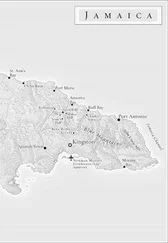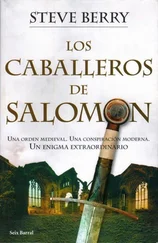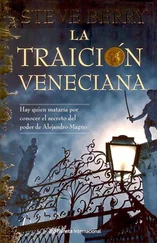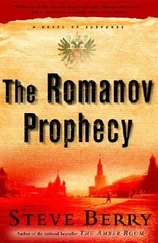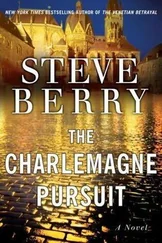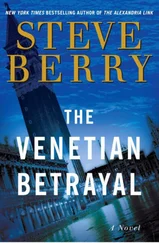The incident in Egypt, with Napoleon witnessing the murder of a mother and her infant (chapter 4), happened, but Napoleon found no papyri that day. Those are my invention.
All that’s related about the Rothschilds (chapters 5 and 24) is a matter of historical record. They did indeed finance royalty, governments, and wars, profiting immensely from all sides.
Louis Etienne Saint-Denis (chapter 16) faithfully served Napoleon. He went into exile with his master on both Elba and St. Helena and penned all of Napoleon’s writings (chapter 40). Napoleon bequeathed to Saint-Denis 400 books from his personal library (chapters 16, 17, and 25) and charged him with holding those books until Napoleon’s son attained the age of sixteen. The addition of one particular volume on the Merovingians-supposedly named in the will-is mine, as is the manner in which Saint-Denis ultimately disposed of that collection (chapter 16).
Paris is accurately described throughout (starting with chapter 18), as is Shakespeare & Company, which stands on the Left Bank, facing Notre Dame.
The Creature from Jekyll Island: A Second Look at the Federal Reserve , by G. Edward Griffin, proved helpful in formulating Sam Collins’ and Meagan Morrison’s views on conspiratorial economics. That book also pointed me toward Executive Order 11110 (chapter 24), issued by President Kennedy shortly before his assassination.
Westminster Abbey in London, along with its Poets’ Corner (chapter 19), are fascinating. Jack the Ripper tours (chapter 43) occur on London’s east side nightly (I enjoyed one myself).
France’s Loire Valley is magnificent (chapter 20). Eliza Larocque’s château is my creation, though I modeled it after the fabled Chenonceau, which also spans the river Cher. Paris’ Latin Quarter (chapter 23) bristles with life twenty-four hours a day and is accurately captured, as is the Cluny Museum (first seen in chapter 26) with its vast array of medieval exhibits (chapter 28). The Invalides and its Church of the Dome (chapter 36) are both Paris landmarks. Napoleon’s sarcophagus (chapter 36) is certainly grandiose. The part of the military museum at the Invalides devoted to Napoleon was undergoing renovation while I was there, so I incorporated that into the story (chapter 38). Only the addition of the book on the Merovingians (chapters 36 and 38) is fiction. The Ritz hotel, its Bar Hemingway (chapter 33), and Le Grand Véfour restaurant (chapter 37) are all there. Meagan Morrison’s fascination with the Paris underground (chapter 44) mirrors my own with those subterranean passages.
Pozzo di Borgo (chapters 20, 23, and 35) lived. He was, first, Napoleon’s childhood friend, then his sworn enemy. Di Borgo’s life and Corsican vendetta are accurately described. He was instrumental in convincing Tsar Alexander not to make a separate peace with France, which ultimately led Napoleon down his road to ruin. Di Borgo’s interest in any lost treasure, and his family connection with Eliza Larocque, are purely my invention.
Abbé Buonavita (chapters 25 and 46) was on St. Helena with Napoleon and left shortly before the emperor died. He was permitted to take with him several personal letters for Napoleon’s wife and child. The addition of secret messages within those letters is my creation. The visit to St. Helena in 1840 by Prince de Joinville, to retrieve Napoleon’s remains and return them to France, happened as described (chapter 37). Those present, and their comments, are likewise accurately quoted.
The Eiffel Tower plays an integral role in this story. Like Sam, Stephanie, and Meagan, I climbed its several hundred metal stairs to the first and second platforms (chapter 39). The tower’s sites and geography, including La Salle Gustav Eiffel (chapters 39, 48, and 49), all exist. And the surprising effect a kiss-like-you-mean-it has on human life expectancy (chapter 44) is real, as is the study Meagan Morrison refers to.
The 14 lines containing coded information in the form of raised letters (chapters 39 and 47) are from the legend associated with Rennes-le-Château, which I explored in my novel The Templar Legacy . While researching that story, I came across these two legendary parchments. Since no one has ever actually seen those documents, and since their secret message -To King Dagobert II and to Sion belongs the treasure and he is there dead- applied to this story, I appropriated them. The only modification made was the elimination of the designation II . Dagobert I was a great Merovingian king, and his 13th century funerary monument stands in the Basilica of Saint-Denis (chapter 61). Napoleon was indeed fascinated with Merovingians (chapter 33). With all of these seemingly unrelated facts suddenly bumping up against each other, a marriage seemed in order. Hopefully, Rennes-le-Château purists will forgive me.
The Basilica of Saint-Denis is a French national treasure. Given its location north of central Paris, few tourists venture there, which is a shame. They are missing something even more awe inspiring than Notre Dame. Chapters 67-77 accurately describe the church, including construction that was ongoing during my visit. Only the olive tree marker and tunnel beneath (chapter 77) are my additions.
The congressional legislation noted in chapters 51 and 52, known as The Financial Service Modernization (Gramm-Leach-Bliley) Act and the Commodity Futures Modernization Act, adopted in 1999 and 2000 respectively, are real and most experts now say that these disastrous attempts at deregulation contributed greatly to the economic meltdown of 2008. 60 Minutes featured an entire segment on their effect.
The idea that Osama bin Laden may have profited from the 9/11 attacks through short selling stocks has, for years, been postulated by conspiratorialists. There was actually an American investigation, and the French article mentioned in chapter 52 was published, but no short selling was ever substantiated.
The idea that profit can be made through chaos (chapter 52) is not new. What’s described in chapter 24 about Yugoslavia occurred. The political wisdom contained within the four papyri (chapters 27, 29, and 40) were adapted from The Report from Iron Mountain . According to that document, a 15-member panel, called the Special Study Group, was set up in 1963 to examine what problems would occur if the United States entered a state of lasting peace. They met at an underground nuclear bunker called Iron Mountain and worked in secret for two years. One member of the panel, an anonymous professor at a college in the Midwest, decided to release the report to the public and Dial Press published it in 1967.
Of course, only the part about Dial Press is true. The book was published and became a bestseller. The general consensus is that the entire report was a hoax. In fact, The Guinness Book of World Records eventually labeled The Report from Iron Mountain as its Most Successful Literary Hoax. Still, the ideas presented within the “report” about war, peace, and maintaining political stability are, if nothing else, intriguing. The idea that society will allow in a time of threat that which it would never tolerate in peace is particularly relevant today.
The oracle relied on by Eliza Larocque is real. The Book of Fate, Formerly in the Possession of and Used by Napoleon is still in print. All of the questions and answers quoted in chapters 8, 10, 29, and 67 are taken from the actual oracle. The oracle’s dubious history (chapter 8) is one of contradiction. Napoleon was highly superstitious and fate played a role in his decisions (chapter 10), but did he consult an oracle every day? No one knows. The idea, though, is captivating.
It is true, as Eliza Larocque noted, that save for Jesus Christ, more books have been written about Napoleon than any other historical figure, yet he remains enigmatic. He was, on the one hand, a capable and competent administrator, and on the other (as Eliza Larocque laments in chapter 35) a man with no loyalty, who consistently turned on his family, friends, and country. His hatred of financiers, and of incurring debt, is a historical fact (chapter 16). He also believed in plunder. In that regard, he was truly a modern Merovingian. Of course, he would say that his plundered loot was simply the spoils of war, and perhaps he’s right. Whether he actually hoarded away some of those spoils for himself-Napoleon’s cache, which plays such a central role in this story-remains a matter of debate.
Читать дальше


